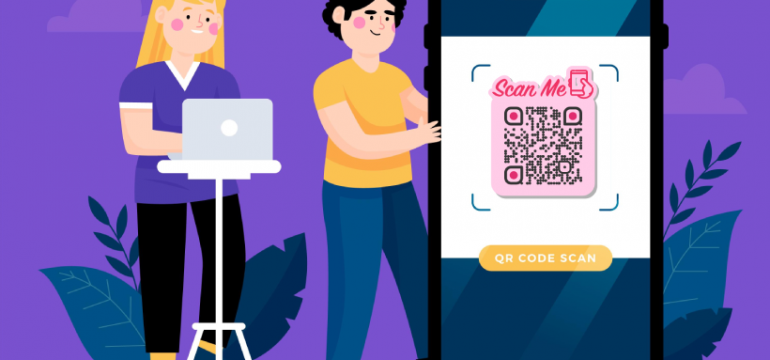In today’s fast-paced digital age, the boundaries between the physical and digital worlds are becoming increasingly blurred. One technology that is playing a significant role in bridging this gap is the Quick Response (QR) code. These small, square-shaped codes have become ubiquitous in our daily lives, revolutionizing the way we interact with products, businesses, and information. From advertising and marketing to contactless payments and authentication, QR codes have emerged as a powerful tool for connecting the physical and digital realms.
QR codes were first developed in 1994 by Denso Wave, a subsidiary of the Japanese automotive company Denso Corporation. Initially used in the automotive industry to track vehicles during manufacturing, QR codes quickly gained popularity due to their versatility and ease of use. Unlike traditional barcodes, which can only store limited information horizontally, QR codes can store data both vertically and horizontally, allowing for the storage of significantly more information.
The widespread adoption of smartphones equipped with high-quality cameras and QR code scanning capabilities has been instrumental in the rise of QR code usage. With a simple scan using a smartphone camera or a dedicated QR code scanning app, users can instantly access a wide range of digital content and services. Whether it’s accessing website URLs, making payments, downloading apps, or receiving promotional offers, QR codes enable seamless transitions between the physical and digital realms.
One of the most common applications of QR codes is in marketing and advertising. Companies have integrated QR codes into their campaigns to provide customers with quick and convenient access to additional information, exclusive promotions, or interactive experiences. A QR code placed on a product packaging can lead consumers to a website with detailed product specifications, customer reviews, and related content, enhancing the overall shopping experience.
QR codes have also been instrumental in facilitating contactless payments, especially in the wake of the COVID-19 pandemic. By scanning a QR code at a point of sale, customers can make payments using digital wallets or mobile payment apps. This eliminates the need for physical cash or card transactions, making payments faster, more secure, and highly convenient.
Moreover, QR codes have become an integral part of the authentication and verification process in various industries. For instance, airlines use QR codes as digital boarding passes, allowing passengers to check-in and board flights using their smartphones. Similarly, event organizers utilize QR codes on tickets to streamline access control and reduce the risk of counterfeit tickets.
The versatility of QR codes has extended beyond business and marketing applications. They have also found applications in education, healthcare, tourism, and even art galleries. In education, QR codes can be used to provide students with additional learning resources, interactive quizzes, or supplementary materials. In healthcare, QR codes can enable quick access to medical records, prescription details, or appointment scheduling. Museums and art galleries use QR codes to provide visitors with in-depth information about exhibits or to offer audio guides in multiple languages.
However, as QR codes continue to gain popularity, it is crucial to address security concerns. Hackers can potentially create malicious QR codes to redirect users to fraudulent websites or steal sensitive information. Users should exercise caution when scanning QR codes from unknown or untrusted sources, and organizations must implement security measures to ensure the authenticity and integrity of their QR codes.
In conclusion, QR codes have become a vital bridge between the physical and digital worlds, offering seamless connectivity and convenience. Their ability to store and convey information instantly has transformed various industries, from marketing and payments to authentication and education. As the technology continues to evolve, we can expect QR codes to become even more integrated into our daily lives, enhancing our interactions with the world around us and further blurring the lines between the physical and digital realms.



